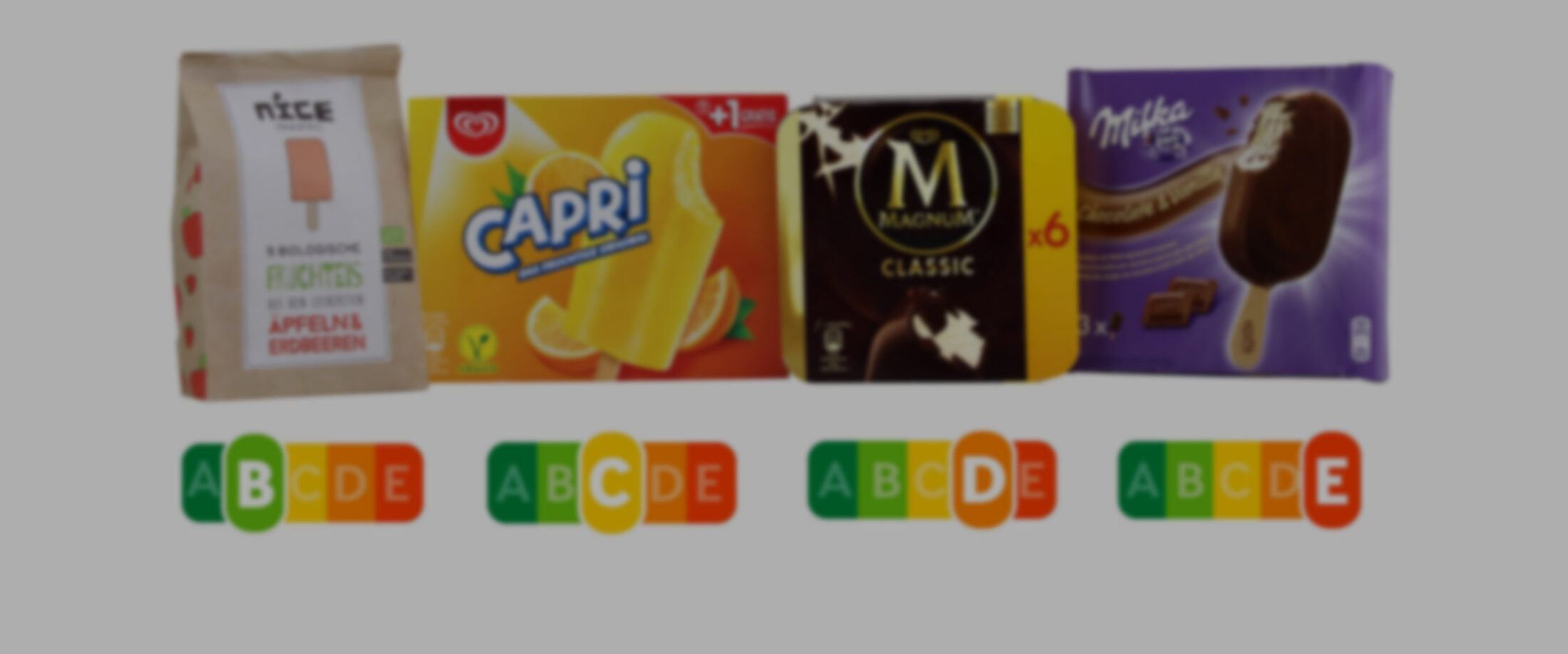Despite transparency, the Nutri-Score algorithm faces strong resistance
The Nutri-Score summarizes basic nutritional information on a 5-letter scale. Despite its many qualities, it faces a strong backlash that could hold a lesson for operators of automated systems.

The German government, which currently holds the rotating EU presidency, will push for EU-wide guidelines on nutrition labeling at Tuesday's Council of agriculture ministers, which it chairs. In particular, the German minister should advocate the use of Nutri-Score, an algorithm that informs consumers of the nutritional qualities of edible products.
Nutri-Score is entirely transparent. There is even an implementation in Excel if you want to test it. Products receive positive points for fiber, proteins, fruits, nut and olive or rapeseed oil. They receive negative points for sugar, energy, saturated fat and salt. All values are expressed per 100 grams (or 100 milliliters) of product. The score goes from -15 to 40 and is further summarized on a 5-step scale that goes from A (green) to E (red). It is shown in front of the packaging, unlike the list of ingredients, which remains in the back.
Model research
The team of academics that developed the system tested several formats of labels in experiments and found this solution to be best understood by consumers.1 The choice of variables that make up the Nutri-Score is based on the United Kingdom’s Food Standards Agency nutrient profiling system, which is correlated with health outcomes: people eating products with a high Nutri-Score have worse health outcomes, all things being equal. Finally, the Nutri-Score was tested in a large-scale randomized trial. The average nutritional value of the median shopping cart was about one point lower (out of 55 possible points) for people who were exposed to the Nutri-Score.2
In other words, the Nutri-Score works. It was developed by scientists from various European countries and underwent thorough testing, which led to publications in peer-reviewed journals. This is why the backlash against it is especially interesting.
Backlash
Nutri-Score is not mandatory anywhere, but governments in France, Belgium, Switzerland and Germany strongly encourage it. In France, where uptake is strongest, about one in four products on supermarkets’ shelves display the label.3
Critics of Nutri-Score point to the reference amount, which is fixed at 100 grams or milliliters. Olive oil, for instance, can only achieve a C score (oil is pure fat), even if people only use tiny amounts. While it is easy to see the problem, it is harder to find a better solution.
In the United States, serving size of the “nutrition facts” box is defined by law. The serving size for brownies is 40 grams, but only 30 grams for cookies.4 It is unclear why this system would make more sense for consumers, compared to a fixed reference amount. More importantly, it could be possible, at least in theory, for an industry to lobby to reduce the weight of a serving size to make the numbers on a label appear more innocuous.
Gaming the Nutri-Score
Some consumer groups find it problematic that the Nutri-Score can be easily twisted. A food company can improve the score of its products by adding fibers, by replacing butter with rapeseed oil or by changing the amount of salt by just the microgram needed to reach a B or C ranking.5 Here again, it is hard to imagine how a 5-step scale could avoid cut-off values (researchers experimented with other systems, which were much harder for consumers to understand).
Perhaps more worryingly, a food company could improve the score of its products by replacing sugar with artificial sweeteners. Diet sodas have a B score, for instance, while most natural fruit juices have a C score6. Other molecules, like antioxidants, are likewise disregarded by Nutri-Score.
There was a trade-off: Nutri-Score is explainable because it focuses on less than 10 variables. It is very likely that a more complex algorithm would have left room for even more manipulations. More importantly, the promoters of Nutri-Score focused on measures for which there is very strong evidence that they are linked to health outcomes. There is still no evidence that antioxidants, olive oil or green tea are more healthy than diet soda.7 (Most studies detailing the benefits of superfoods stop at correlations. They usually show that richer people are healthier).
Transparent algorithms in the post-truth public sphere
The lobbies of large Italian (and many other) food manufacturers are currently running a massive campaign against the label, arguing that it would jeopardize much of Italy’s food exports and that it is a ploy by the French to destroy the Italian economy8. While Nutri-Score does give low rankings to cheese and olive oils, this is because of their fat content, not their origin. And if you are wondering, the secret of the Mediterranean diet is the quasi-absence of sugar and red meat, not Gorgonzola.
The magnitude of the smear campaign against Nutri-Score, coupled with a clear lack of love from consumers, who tend to equate it with the dozens of other labels that decorate food packages, shows that transparency and scientific evidence are far from enough to achieve success. It is too early to know whether the label will become normal and help citizens improve their health or join the PDO, PGI, SG, TSG and many more labels that few, apart from a handful of consultants, understand.
The Nutri-Score story also shows the risk of depoliticizing an issue. The health goals of the program could probably be achieved even more simply, through a sugar tax or other restrictions on sugar. Despite its transparency and simplicity, the algorithm can be seen as a smokescreen for a clearer, and understandably divisive, issue.
1 Egnell, Manon, et al. "Objective understanding of Nutri-Score Front-Of-Package nutrition label according to individual characteristics of subjects: Comparisons with other format labels." PLoS One 13.8 (2018).
2 Julia, C., and S. Hercberg. "Nutri-Score: Evidence of the effectiveness of the French front-of-pack nutrition label." Ernahrungs Umschau 64.12 (2017).
3 According to Nutri-Score: The story so far, EuroHealthNet magazine, 5 Dec. 2019.
5 See for instance the report by Cécile Tran-Tien for RTS on 21 June 2020.
6 See for instance the report by Sébastien Giron for RTBF on 13 January 2020.
7 On the absence of evidence of a link between cancer and artificial sweeteners: Mishra, Ankit, et al. "Systematic review of the relationship between artificial sweetener consumption and cancer in humans: analysis of 599,741 participants." International journal of clinical practice 69.12 (2015) ; Mallikarjun, Sreekanth, and Rebecca McNeill Sieburth. "Aspartame and risk of cancer: a meta-analytic review." Archives of environmental & occupational health 70.3 (2015). On the absence of evidence of the health benefits of antioxidants: Ye, Yizhou, Jing Li, and Zhongxiang Yuan. "Effect of antioxidant vitamin supplementation on cardiovascular outcomes: a meta-analysis of randomized controlled trials." PloS one 8.2 (2013) (there might be small positive effects on specific diseases). For tea, see Tea: A cup of good health?, Harvard Health Publishing, Aug. 2014. For olive oil, this meta analysis concludes that there is probably a link between consumption and health outcomes, but there is also “low or moderate certainty of evidence”: Schwingshackl, Lukas, et al. "Impact of different types of olive oil on cardiovascular risk factors: A systematic review and network meta-analysis." Nutrition, Metabolism and Cardiovascular Diseases 29.10 (2019).
8 Nutri-score, Il ministro Speranza: «Dico no all’etichetta a semaforo per il cibo», Corriere.it, 19 December 2019.
Did you like this story?
Every two weeks, our newsletter Automated Society delves into the unreported ways automated systems affect society and the world around you. Subscribe now to receive the next issue in your inbox!
